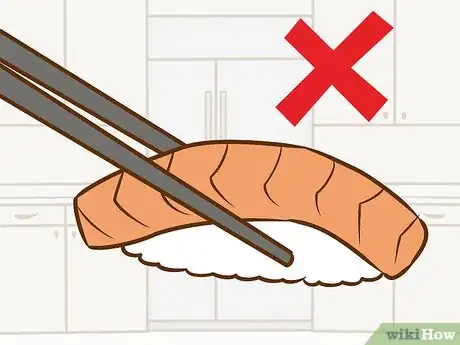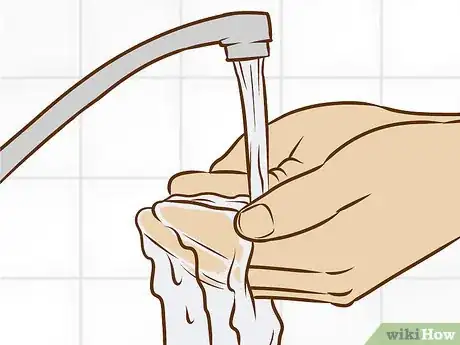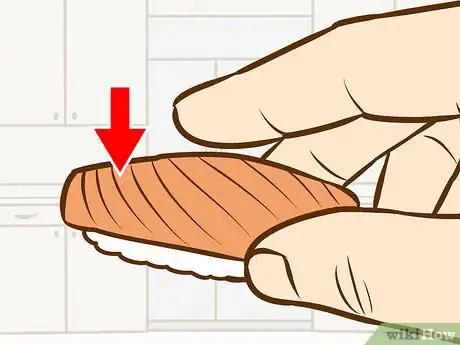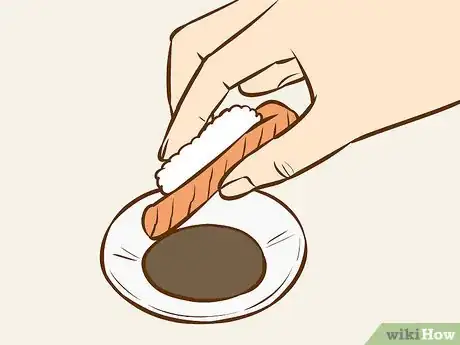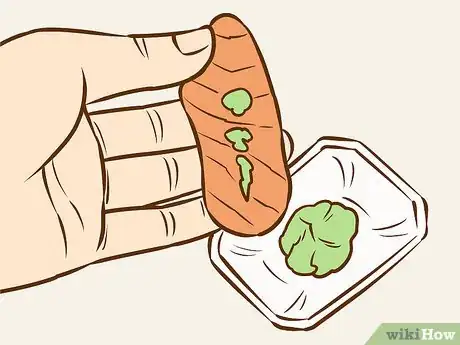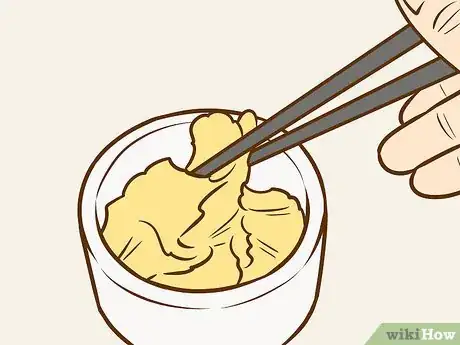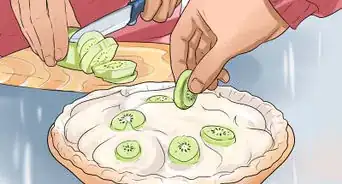This article was co-authored by Daniel Siriban. Daniel Siriban is a Japanese Personal Chef and the Owner of Roshi Experience. With over 18 years of culinary experience, he specializes in sushi, teppanyaki, and traditional Japanese dining. Daniel holds an AA in Restaurant, Culinary, and Catering Management from The Art Institute of California, Orange County.
This article has been viewed 43,675 times.
Nigiri sushi is a popular type of sushi where a piece of fish is placed atop rice. Many Japanese sushi restaurants serve nigiri sushi with cuts of fish like salmon, tuna, and mackerel. You may wonder how to eat nigiri sushi properly. Start by holding the nigiri sushi with the right technique. Then, eat the nigiri sushi with a small amount of soy sauce, if desired. You can also have wasabi and ginger with the sushi based on your preferences.
Steps
Holding the Nigiri Sushi Properly
-
1Do not use chopsticks. Nigiri sushi is not supposed to be eaten with chopsticks. It is designed to be eaten by hand. Using chopsticks is a big no-no when it comes to eating nigiri sushi.[1]
- You are also supposed to eat sushi rolls with your hands as well, not chopsticks.
-
2Clean your hands. In some sushi restaurants, you will be offered a hot towel at the beginning of the meal. Wipe your hands with the towel to clean them and then refold the towel. If you are not offered a towel at the beginning of your meal, go to the bathroom and wash your hands.[2]
- In a pinch, you can also use hand sanitizer to clean your hands.
Advertisement -
3Use your thumb and middle finger to hold the sushi. Pick up the nigiri sushi with your dominant hand using your thumb and middle finger. Do not squeeze the sushi too tightly, just enough so you can hold it comfortably between your fingers.[3]
-
4Position the sushi so the fish is upward. Make sure the sushi is positioned so the fish is facing upward and the rice is facing downward. This will make it easier for you to eat the sushi properly.
Eating the Nigiri Sushi
-
1Pour a small amount of soy sauce in the shoyu dish. At sushi restaurants, you will be given a shoyu dish for soy sauce. Do not pour a large amount of soy sauce in the dish. Instead, pour a very small amount of soy sauce, just enough to dip the piece of sushi in.[4]
- Never pour the soy sauce directly on the sushi, as this ruins the flavor of the fish.
- In some cases, if the sushi is high quality, you do not need to have it with any soy sauce at all.
-
2Flip the sushi over and dip it in the soy sauce. Holding the sushi between your thumb and middle finger, flip it over so the fish side is facing downward. Then, dip it lightly once in the soy sauce.[5]
- Do not dunk or drown it in the sauce. A quality piece of nigiri sushi does not need a lot of soy sauce.
- Never put the rice side of the sushi in the soy sauce, as the rice will soak up the sauce and the flavor of the sushi will be compromised.
-
3Add a small amount of wasabi to the fish before eating it. Nigiri sushi is made with a small dab of wasabi already placed between the fish and the rice. It has been placed there by the sushi chef based on their understanding of the fish. Only add a small amount of wasabi to the top of the fish before you eat it if you prefer a stronger wasabi taste.[6]
- If you prefer a more subtle wasabi taste, you may not need to add more wasabi to the sushi.
-
4Eat nigiri in one bite. Nigiri sushi is meant to be eaten in one bite. If the sushi is too large for you to eat in one bite, do your best. Try to eat the sushi in one to two bites at the most.[7]
- Avoid cutting the sushi with your teeth or pulling it apart with your hands. This will compromise the flavor and texture of the sushi.
-
5Have pickled ginger between bites to cleanse your palette. Most sushi restaurants provide pickled ginger that you are supposed to eat between bites of sushi. The ginger serves as a palette cleanser. Do not eat the ginger with the sushi, as this will compromise the flavor.[8]
- If you cook sushi rice in a rice cooker, use water according to the size of the rice.
- For Japanese short grain rice, you can use water in the ratio of one to one.
- Use more water for medium or long grains of rice.
References
- ↑ http://www.latimes.com/food/dailydish/la-dd-tokyo-sushi-chef-proper-way-eat-sushi-20140828-story.html
- ↑ http://www.sushifaq.com/basic-sushi-experience-information/how-to-eat-sushi-sushi-etiquette/
- ↑ https://www.thedailymeal.com/eat/there-s-only-one-right-way-eat-nigiri-sushi-and-it
- ↑ https://www.thedailymeal.com/eat/there-s-only-one-right-way-eat-nigiri-sushi-and-it
- ↑ https://www.thedailymeal.com/eat/there-s-only-one-right-way-eat-nigiri-sushi-and-it
- ↑ http://www.sushifaq.com/basic-sushi-experience-information/how-to-eat-sushi-sushi-etiquette/
- ↑ https://www.thedailymeal.com/eat/there-s-only-one-right-way-eat-nigiri-sushi-and-it
- ↑ http://www.sushifaq.com/basic-sushi-experience-information/how-to-eat-sushi-sushi-etiquette/
